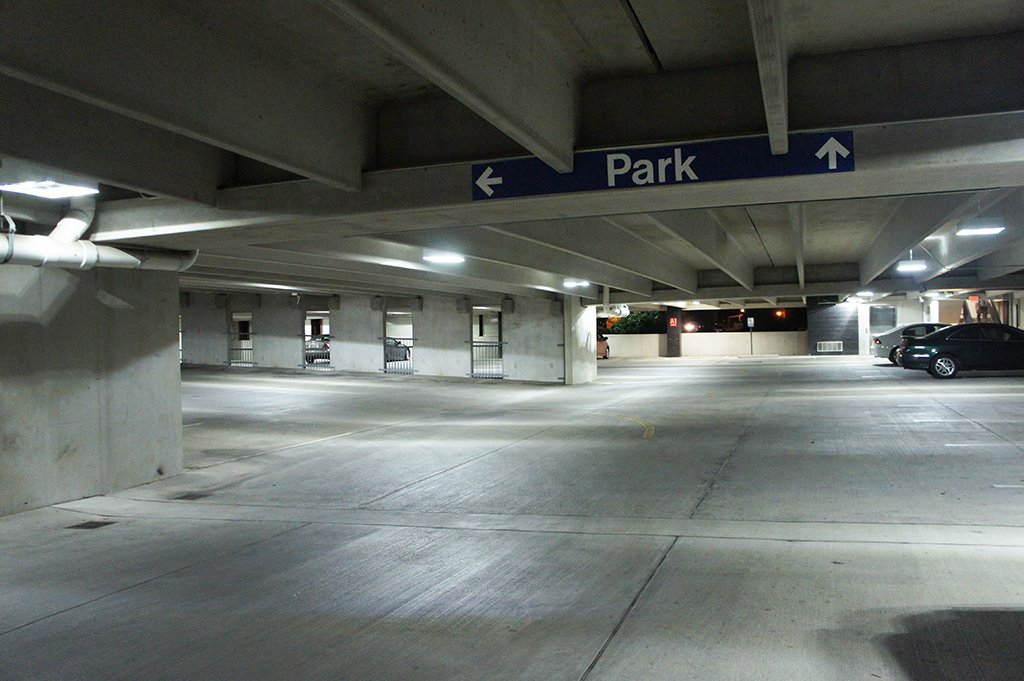 Like any type of infrastructure subject to wear and tear, parking decks require routine maintenance and repairs. But they have much more demanding durability requirements than most other buildings because they must withstand harsh weather, water infiltration, and in many areas deicing salts.
Like any type of infrastructure subject to wear and tear, parking decks require routine maintenance and repairs. But they have much more demanding durability requirements than most other buildings because they must withstand harsh weather, water infiltration, and in many areas deicing salts.
The concrete industry has learned a great deal recently about making effective repairs, starting with a better understanding of how they come to be needed and complemented by high-performance repair materials.
Dealing with corrosion
For example, corrosion of the reinforcing steel is one of the most common root causes of concrete distress in parking structures. When that is known to be the case, there are several ways to approach the repair, all based on understanding the failure mechanism.
One way to achieve a longer lasting repair is to protect the steel, once it has been exposed, with an epoxy coating, which stops the chloride from reaching the steel and thus prevents corrosion. Adding a corrosion inhibitor to the concrete mortar will further neutralize the chlorides, and using a sealer such as silane can help by keeping water out of the concrete.
Corrosion is an electrical process, so if you keep water out, there is no electrolyte to pass the current, the electrons, so the corrosion slows down. Applying a waterproofing membrane to the completed repair can similarly help combat corrosion. Choosing an appropriate coating, based in part on the type of structure, is important to ensure that it improves concrete performance rather than sealing in moisture and hastening the deterioration.
Addressing the halo effect in the concrete surrounding the repair through passive cathodic protection can further extend the life of the repair. This approach uses a discrete galvanic anode made of zinc embedded in the concrete to attract the corrosion, diverting it from the reinforcing steel.
Because these repaired areas represent a relatively small portion of the structure, typically less than 10%, proactive corrosion protection is recommended, for the rest of the structure as well. At a minimum, a waterproofing membrane should be applied to the entire deck. It can be made even more effective by spraying a migrating corrosion inhibitor (MCI) on the concrete before applying the membrane.
Reedy says another approach is to apply a colloidal silicate sealer to the concrete. Although somewhat similar to an MCI in that it migrates deep into the substrate, the colloidal silicate chemically reacts with free calcium hydrate compounds in the concrete, converting those compounds into insoluble calcium-silicate-hydrate gel, which elevates the pH and repassivates the reinforcing steel.
Where reinforcing steel corrosion is not well controlled by other means, a system of active cathodic protection can be applied. Unlike the passive system that relies on naturally occurring galvanic action, an active cathodic protection system uses an external power source to apply electrical potential and reverse the electrochemical process of corrosion. By driving the current in the direction opposite to its natural flow, an active system can stop and even reverse the corrosion of the steel. Their use on parking structures is not widespread, primarily because they require a lot of maintenance, which drives up cost.
Dealing with thermal issues
It the temperate zone between the northern and southern states, freeze/thaw damage to parking decks can become a concern. Even where air entrainment was included in the original concrete, freeze/thaw cycles can still cause severe damage when the concrete is supersaturated. Therefore, again, keeping the concrete dry by applying a waterproof membrane can help avoid this damage.
Especially in parking decks located further south, wide thermal fluctuations also can be a cause of cracking in concrete. The cracking allows water to get into the concrete, which accelerates corrosion, so properly repairing cracks is important to the concrete’s overall health.
Water entering the concrete through cracks can be especially problematic in the case of post-tensioned and prestressed concrete. Some earlier strand protection schemes have not performed as well as anticipated. When a crack allows water to reach a strand and corrosion begins, a phenomenon called stress corrosion kicks in. These strands under high tension corrode at a rate that is 10 times the corrosion rate of conventional reinforcing steel. Fortunately, in this area as in others, the industry has learned along the way and improved strand protection systems. However, structures built before the 1990s using prestressing and post-tensioning may require special attention in the case of concrete repairs.
Controlling water makes repairs last longer
The art and science of concrete repairs are helping extend the useful lives of more parking decks every year, an important trend in a day when sustainability is frequently a prime concern. In most cases, water is a the root of the problem, whether it concerns corrosion, freezing and thawing, or both. By determining the root cause of the deterioration, selecting the right repair products for the type of parking structure, enhancing the existing concrete to its maximum potential and repassivating steel, and following up with a waterproof membrane, contractors can ensure their concrete repairs are effective, durable for the long term, and sustainable.
ABOUT THE AUTHOR Tom Klemens is a civil engineer and former Concrete Construction editor who’s now a freelance writer based in Palatine, Illinois.